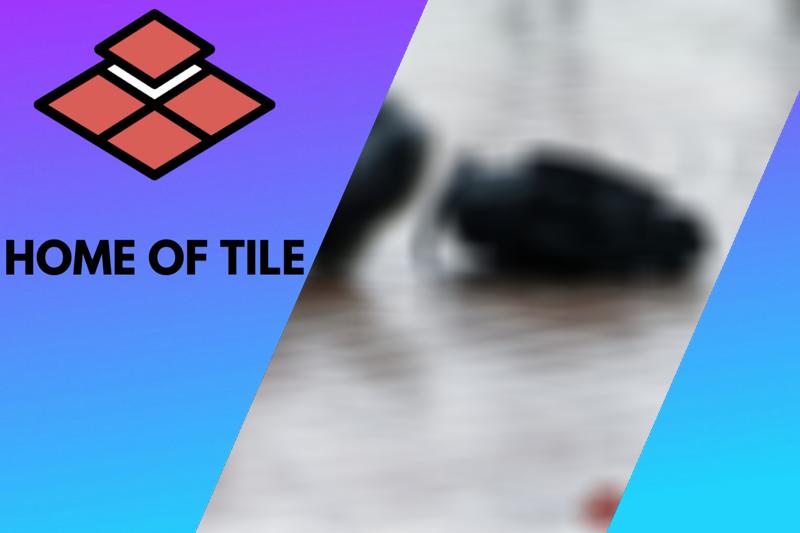Are Outdoor Tiles Slippery, 10 Things You Should Know
If you’re considering getting outdoor tiles, one of your concerns may be how slippery they’ll be in various weather conditions. Here’s everything you need to know about your outdoor tiles and their slick factor.

Contents
Are Outdoor Tiles Slippery?
Outdoor tiles are slippery because they are exposed to the elements, meaning they get snowed and rained on, making some surfaces extremely slippery and treacherous when wet. Typically, the tiles are significantly less slippery after the snow or when the water dries.
What Kind of Tile Is Not Slippery When Wet?
Rubber tiles are the only kind of tiles that aren’t slippery when wet because rubber is water-resistant and provides excellent traction underfoot. You can walk on rubber tiles even when it’s raining and won’t slip and fall. Rubber tiles are also durable, strong, and unmatched in terms of safety.
Non-slip outdoor tiles provide more stability for a more comfortable and safe experience walking outdoors. While rubber is the most slip-resistant material for flooring, porcelain tiles are the most popular type of non-slip tiles.
Here are some benefits of installing porcelain tiles outdoors:
- Porcelain tiles are textured. The textured surface gives bare feet and footwear more traction and grip with every step.
- Porcelain tiles are more aesthetically pleasing than rubber tiles for your backyard.
- Porcelain is naturally water-resistant. Porcelain tiles aren’t too slippery immediately after a storm or after it snows. The tile’s water resistance also allows you to clean the tiles more efficiently to prevent algae and other buildups.
- Porcelain tiles are non-porous. You won’t have to worry too much about algae forming on porcelain tiles because they are non-porous. This composite material doesn’t retain moisture, so algae won’t have an ideal growing environment.
How To Determine Which Tiles Are Slippery
Most tiles are assigned a slip resistance rating to help consumers understand slippery and non-slip tiles better. The following table outlines the resistance values and your slip risk:
Slip Resistance Value | Slip Risk |
R9 | Extremely high |
R10 | High |
R11 | Medium |
R12 | Low |
R13 | Extremely low |
Based on these values, I recommend purchasing tiles with a score of at least R11 if you use them outside, where they’re exposed to moisture.
How To Prevent Slipperiness
If you already have outdoor tiles and want to avoid replacing them with a non-slip option, there are some things you can do to prevent your tiles from getting too slippery. Here are my top recommendations:
● Clean your tiles regularly
The key to maintaining safe and slip-free tiles is regular cleaning, as the main reason why tiles get slippery is because of buildup. Buildup can form due to the following:
- Algae growth
- Dirt accumulation
- Mud
Tiles can become slippery when algae growth occurs. As stagnant water can promote algal growth, tiles are most susceptible to forming a layer of algae after a storm. This algae layer or film on the tile surface is very slick underfoot.
If you live in a dry area, a quick sweep should be enough to get rid of any dust or dry dirt buildup. However, if you’ve recently experienced bad weather, you may need to deep clean your flooring.
To clean your tiles thoroughly, follow these instructions:
- Mix warm water with dishwashing liquid.
- Use a soft-bristle brush to scrub and clean the tiles.
- Toss some clean water on top to rinse.
- Give the tiles enough time to dry before walking on them again.
● Apply an anti-slip coating
Another great way to prevent tiles from getting too slippery is to apply an anti-slip coating. I recommend this Slip Doctors Stone Grip Non-Slip Floor Treatment from Amazon because it works on various materials, including:
- Porcelain
- Ceramic
- Concrete
- Marble
- Granite
- Other stone surfaces
I also like that Slip Doctors’ formula is long-lasting. After application, it helps tiles remain non-slippery for two years or more.
To apply this coating, follow these steps:
- Put the formula in a spray bottle.
- Spray the tiles liberally.
- Allow the formula to sit on the tiles for at least ten minutes.
- After the ten minutes is up, you can rinse it with water
- Wait for the water to dry.
● Clear snow and ice as soon as possible
Snow and ice buildup is another common culprit for outdoor tile slipperiness. Try to clear away the snow and ice as soon as it forms so it doesn’t have a chance to become a sheet of ice. To avoid damaging or scratching the tile surface, use tools made from plastic or rubber when scraping the snow off the tiles.
● Use an outdoor rug
Sometimes, the best way to prevent your floor tiles from getting too slippery is to cover them up! Many outdoor rugs have a solid grip or a rubber base, so you can cover the slippery tiles with the rug to ensure safety and comfort.
I like this Gorilla Grip All-Season WeatherMax Doormat from Amazon because it’s heavy-duty, features deep grooves, and has a beveled rubber border. This mat is weather- and fade-resistant, so it can withstand rain, snow, and prolonged exposure to sunlight. It’s also suitable for high traffic, so you won’t notice too many signs of wear and tear even if many people pass over the area.
● Use a grit additive
You can apply a grit additive to your outdoor tiles to give the surface a slip-resistant texture. Grit additives increase the traction of the tile material, so it’s rougher and makes it less likely for you to slip.
Grit additives are often used around pools or on boat docks, but you can also use them on your outdoor tiles to increase their safety.
● Prevent algae and moss growth
Many great products are available for cleaning algae and moss and preventing regrowth. These cleaning agents are specially designed to nip all abnormal growth in the bud. If you don’t have much time to clean your outdoor tiles or live in a humid environment, try using some anti-bacterial solution.
I suggest this Bioesque Botanical Disinfectant Solution from Amazon because it kills 99.9% of fungi and mold in just a few minutes. Additionally, it cleans, sanitizes, disinfects, and deodorizes in just one step, saving you time and energy.








